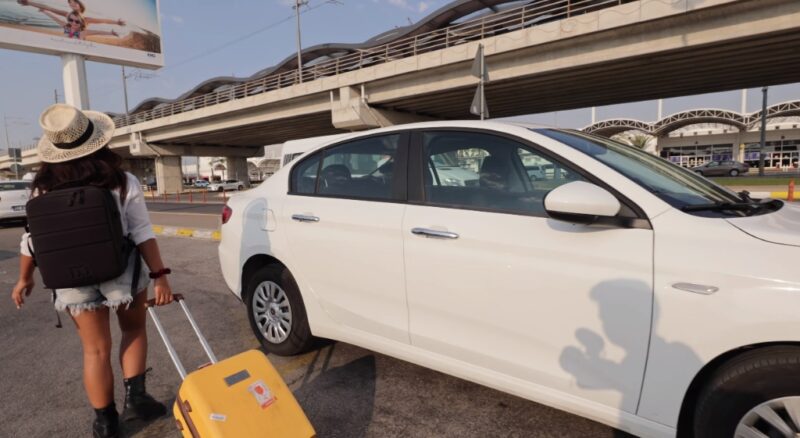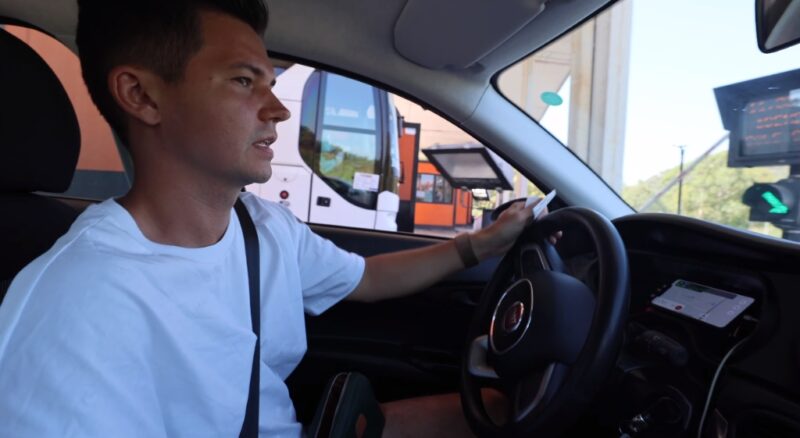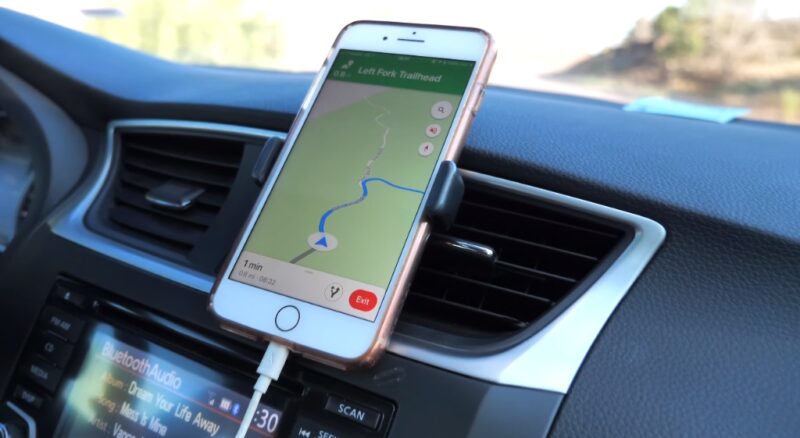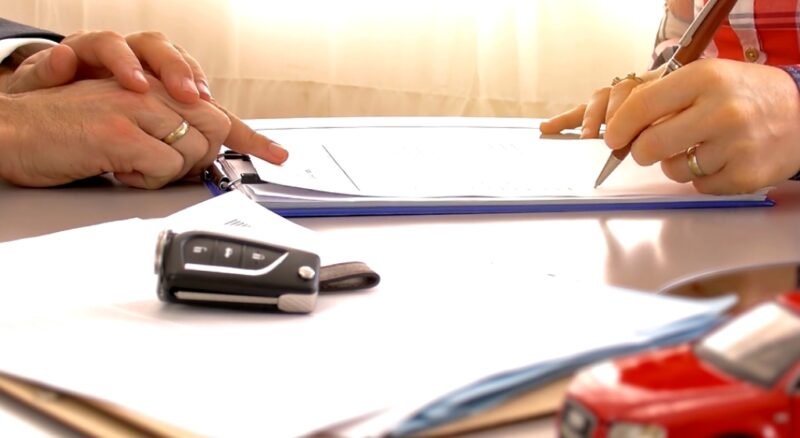Renting and driving a car in Europe is an exhilarating way to explore the continent. It offers freedom and flexibility that public transport can’t match. However, for US travelers, driving in Europe can be a daunting prospect due to different driving laws, road signs, and cultural norms.
In this article, we’ll guide you through the essential tips to make your European driving adventure in 2024 a smooth and enjoyable experience.
The Basics
Before you set foot in Europe, understanding the basics of driving there is crucial. European roads, especially in historical cities, can be narrower and more winding than what you might be used to in the US.
Also, the majority of rental cars in Europe are manual transmissions. If you’re not comfortable with a stick shift, be sure to reserve an automatic car well in advance.
Preparing for Your Journey
Preparation is key to a successful road trip in Europe. This involves not just physical preparation like packing and itinerary planning but also familiarizing yourself with local driving laws and customs. Remember, knowledge is power, and being well-prepared will make your journey much smoother.
Navigating Rental Car Procedures

Choosing the Right Rental Car
Selecting the right rental car is crucial for your comfort and safety. Consider the size of your party, the amount of luggage, and the type of terrain you’ll be driving on.
Smaller cars make it easier to navigate through narrow European streets and park in compact spaces. Also, consider fuel efficiency, as fuel prices in Europe can be significantly higher than in the US.
Know About Insurance and Paperwork
Navigating the paperwork and insurance for renting a car in Europe can be complex. You’ll need a valid driver’s license, and while a US license is generally accepted, some countries may require an International Driving Permit, which you can easily obtain through the InternationalDriversAssociation, which is recognized in many European countries.
As for insurance, check if your credit card offers rental insurance or if you need to purchase additional coverage from the rental agency.
Familiarizing Yourself with Local Laws
Each European country has its own set of driving laws and regulations. For instance, in Germany, there’s no speed limit on certain sections of the Autobahn, while in France, you’re required to carry a breathalyzer in your car. It’s important to familiarize yourself with these laws to avoid fines and ensure a safe journey.
Mastering European Road Etiquette
European driving styles can differ significantly from those in the US. For example, in Italy, drivers tend to be more aggressive, while in Germany, lane discipline on highways is strictly observed. Adapting to these styles will help you blend in and navigate the roads more confidently.
Handling Toll Roads and Parking
Many European countries have toll roads, and the payment systems can vary. Some use toll booths where you can pay in cash or card, while others have electronic systems. As for parking, it’s often scarce and expensive in city centers. Research parking options in advance, and consider using park-and-ride facilities on the outskirts of cities.
Navigating Roundabouts and Road Signs
Roundabouts are common in Europe and can be confusing for US drivers. Remember to give way to traffic coming from your left and signal your exit. Road signs in Europe are also different, often using symbols instead of words. Familiarize yourself with these signs before your trip.
Essential Driving Tips for Specific Countries

Navigating the Autobahns of Germany
Germany’s Autobahn network is famous for its sections without speed limits. However, it’s important to drive responsibly and adhere to posted speed limits where they apply. Also, remember that passing on the right is strictly prohibited.
Exploring the Scenic Routes of France
France offers some of Europe’s most scenic drives, like the Route Napoleon. Be aware of the priority to the right rule, where drivers entering from the right have the right of way unless otherwise marked.
Experiencing Italy’s Historic Roads
Driving in Italy can be challenging due to narrow streets and assertive drivers. Always be alert and cautious, especially in cities like Rome and Florence, where traffic can be chaotic.
Dealing with Emergencies and Breakdowns
Always have a roadside emergency kit in your car, including a reflective jacket, warning triangle, and first-aid kit. If you face a breakdown or accident, move your vehicle to a safe spot if possible and alert the authorities.
As you plan your European road trip adventure, consider the importance of securing reliable support for unexpected breakdowns and emergencies, exploring whether you require a specific type of coverage to ensure a stress-free journey.
Understanding Breakdown Services and Assistance
Familiarize yourself with the breakdown services provided by your rental company. Many offer 24/7 roadside assistance. Also, it’s useful to have a list of emergency numbers for the countries you’re traveling in.
Navigating Language Barriers
In case of an emergency, facing a language barrier can be challenging. It’s helpful to learn some basic phrases in the local language or have a translation app handy. Even simple phrases like “help” or “emergency” can go a long way in such situations.
Maximizing Your European Driving Experience

Planning Your Route Wisely
When planning your route, consider both the destination and the journey. Europe is filled with hidden gems and scenic routes that can add a magical element to your road trip. Use GPS and road maps, but don’t be afraid to take the less traveled path for an authentic experience.
Embracing Local Cultures and Sceneries
Driving in Europe is not just about moving from point A to B; it’s an opportunity to immerse yourself in diverse cultures and landscapes. Take time to explore local villages, enjoy regional cuisines, and absorb the rich history and natural beauty Europe has to offer.
Staying Safe and Respectful
Safety should always be your top priority. Adhere to speed limits, wear seat belts, and avoid driving under the influence. Also, respect the local culture and environment. Your mindfulness will enhance your experience and leave a positive impact on the places you visit.
Navigating Urban vs Rural Driving
Driving in European cities can be challenging due to narrow streets, heavy traffic, and unique traffic rules. Research city-specific driving tips, be patient, and consider parking outside the city center and using public transport.
Enjoying the Serenity of Rural Driving
Rural driving in Europe can be a delightful experience, with less traffic and stunning landscapes. However, be prepared for unexpected conditions like narrow roads, limited services, and local wildlife. Take your time, and enjoy the serene beauty.
As you plan your European road trip, consider the optimal weather conditions for South American travel to ensure a seamless transition into your adventure behind the wheel on the European roads.
Concluding Thoughts

Driving in Europe as a US traveler is an adventure that offers unparalleled freedom and the chance to create lasting memories. With the right preparation and mindset, you can navigate the roads of Europe with ease and confidence.
We encourage all travelers to embrace this unique experience responsibly. Respect the rules, the culture, and the environment, and you’re sure to have an enriching and unforgettable journey.
Related Posts:
- 4 Useful Things to Know Before Renting a Car in…
- 10 Reasons Why Air Purifiers Are Essential for…
- Does Car Insurance Cover Snow Damage? Essential Tips…
- Why Do Horses Need Hooves? Unveiling the Essential…
- Is Uber’s Black Car Service Worth It? - Find Out Now
- Car History Check: What It Is and Why It's Crucial…







